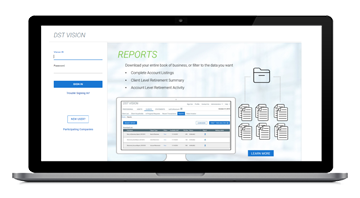What makes ETFs tax efficient?
One of the most widely touted potential benefits of exchange-traded funds (ETFs) is their tax efficiency. But what makes them tax efficient? We discuss the key drivers and how they might benefit tax-sensitive investors.

Are ETFs more tax efficient than mutual funds?
All else equal, making a choice between investing in an ETF and a mutual fund often comes down to cost—both the cost represented in the expense ratios as well as the cost involved in taxable distributions. In this regard, ETFs are widely recognized as generally being cheaper and far less likely than mutual funds to distribute capital gains.
Over the past five years, on average, less than 5% of equity ETFs paid capital gains to shareholders, while an average of 57% of equity mutual funds made distributions. Even during the market downturn of 2022, many mutual funds distributed capital gains while remaining a relatively rare event for ETFs.
Equity ETFs are infrequent distributors of capital gains
Percentage of funds paying gains (%)
An ETF’s potential for capital gains may depend on its category
When we look at the composition of ETFs that tend to distribute gains, we learn that some parts of the market are more likely than others to experience a distribution. Nearly half of the ETFs that distributed capital gains in 2022 belonged to the international equity category, with both currency hedging and local market securities laws helping to explain why this occurred.
However, if you own an equity ETF that’s not focused on a relatively illiquid area of the market, such as international or emerging markets, or filled with sophisticated security types and leverage, chances are you won’t receive a capital gains distribution in any given year.
Mutual funds run on cash transactions
How do most ETFs seem to reliably avoid making distributions? The answer has to do with the unique way that ETFs are structured, helping to differentiate them from mutual funds.
The average mutual fund is constantly engaged in cash transactions. When investors want to buy shares of an open-end mutual fund, the fund issues new shares as it processes investors’ tendered cash, typically putting this cash to work by buying stocks or other securities for the fund’s portfolio. When investors want to redeem their shares in sufficiently large quantities, the fund must sell securities to meet the redemption requests.
Mutual funds are caught up in cash flow
In other words, investors and traditional mutual funds are locked in a circuit of cash transactions that generates capital gains potential for the fund and its investors, regardless of whether they personally sell any shares.
ETFs benefit from creation/redemption process
ETFs are insulated from engaging in these types of cash transactions, which is the key to their tax efficiency. Rather than creating or redeeming shares through cash transactions made directly with fund investors and the underlying markets, ETFs are engaged in a separate circuit of share creation and redemption—a process of in-kind transactions that isn’t considered to be a taxable event.
ETFs can create and redeem shares without cash
In the ETF share creation/redemption process, the ETF manager works with authorized participants (or APs) to bundle (purchase for share creation) or disassemble (sell for share redemption) an underlying basket of the fund’s securities. The process of bundling securities and delivering them into the ETF in the form of a creation unit occurs in kind and allows the fund to inject ETF shares of equivalent value into the market, satisfying rising investor demand.
In the case of declining ETF demand, the fund and the AP work to disassemble creation units. ETF shares are returned to the fund by the AP in an in-kind exchange for a basket of securities of equivalent value. The AP then sells that basket of securities to raise the cash necessary to meet investor redemptions.
Neither mechanism of creation nor redemption is taxable to the ETF itself—except for some situations where the underlying securities are more illiquid or contract based, limiting their ability to be transferred in kind. In such cases, the fund would need to sell the security for cash tender, generating tax consequences.
This creation and redemption process happens behind the scenes and isn’t visible to the investor; however, this feature plays an important role in explaining why ETFs usually offer greater tax efficiency relative to mutual funds.
ETF investors may still be taxed on their gains
For the investor who buys and sells ETF shares on the secondary market, the potential for capital gains remains. Indeed, whenever you sell a capital asset, whether it’s a house, jewelry, antiques, stocks, or shares of a mutual fund or ETF, if you receive more cash than you paid for the asset, your resulting capital gain may be regarded as taxable income.
But the key difference to understand is that, unlike a mutual fund, the average ETF isn’t a reservoir of embedded gains potential. While mutual funds are locked in a circuit of buying and selling capital assets with and for cash—and distributing realized gains to shareholders—ETFs operate in a circuit of in-kind transactions, where the in-kind ability of the underlying basket of securities determines whether a gain is even possible to produce. It’s important to understand that the lower incidence of capital gains distributions isn’t a way to avoid taxes, but it can potentially defer taxes, leaving more money invested in the market until investors decide to sell their shares.
To learn more about some of the unique strategies ETFs can help you pursue, explore our page on ETF investing.
Important disclosures
Important disclosures
The views presented are those of the author(s) and are subject to change. No forecasts are guaranteed. This commentary is provided for informational purposes only and is not an endorsement of any security, mutual fund, sector, or index. Past performance does not guarantee future results.
Investing involves risks, including the potential loss of principal. There is no guarantee that a fund’s investment strategy will be successful. The stock prices of midsize and small companies can change more frequently and dramatically than those of large companies, and value stocks may decline in price. Shares may trade at a premium or discount to their NAV in the secondary market, and a fund’s holdings and returns may deviate from those of its index. These variations may be greater when markets are volatile or subject to unusual conditions. Errors in the construction or calculation of a fund’s index may occur from time to time. Please see the fund’s prospectus for additional risks.
It is important to note that there are material differences between investing in an ETF versus a mutual fund. ETFs trade on the major stock exchanges at any time during the day. Prices fluctuate throughout the day like stocks. ETFs generally have lower operating expenses, no investment minimums, are tax efficient, have no sales loads, and have brokerage commissions.
Mutual funds trade at closing NAV when shares are priced once a day after the markets close. Operating expenses may vary. Most mutual funds have investment minimums and are less tax efficient than ETFs; many mutual funds have sales charges and they have no brokerage commissions.
This material does not constitute tax, legal, or accounting advice, is for informational purposes only, and is not meant as investment advice. Please consult your tax or financial professional before making any investment decisions.
JHS-805719-2025-09-17





